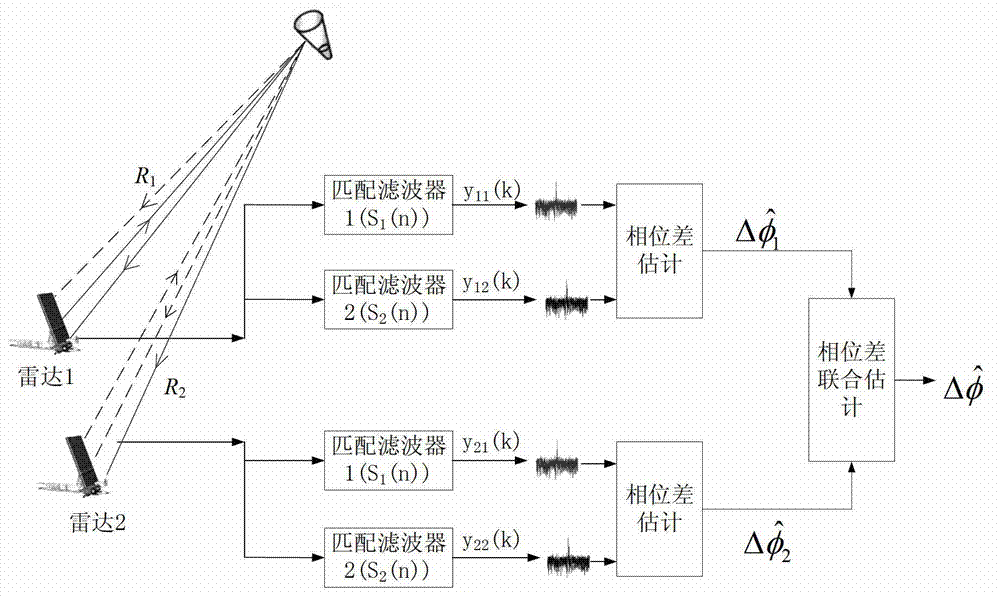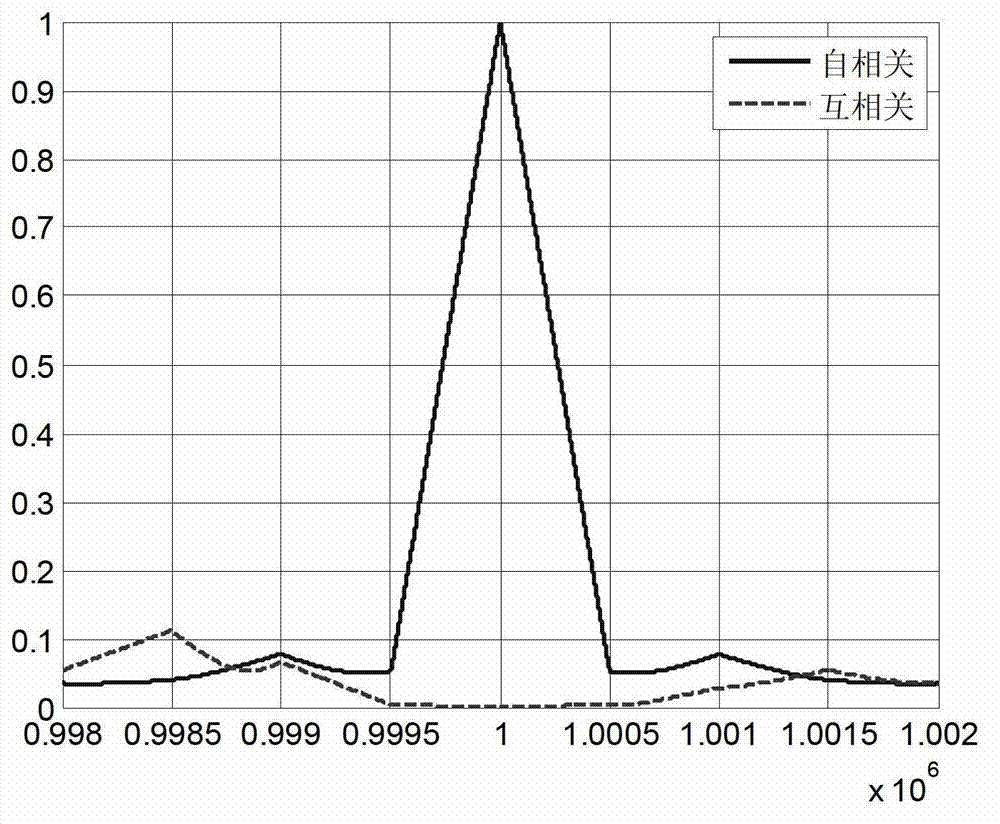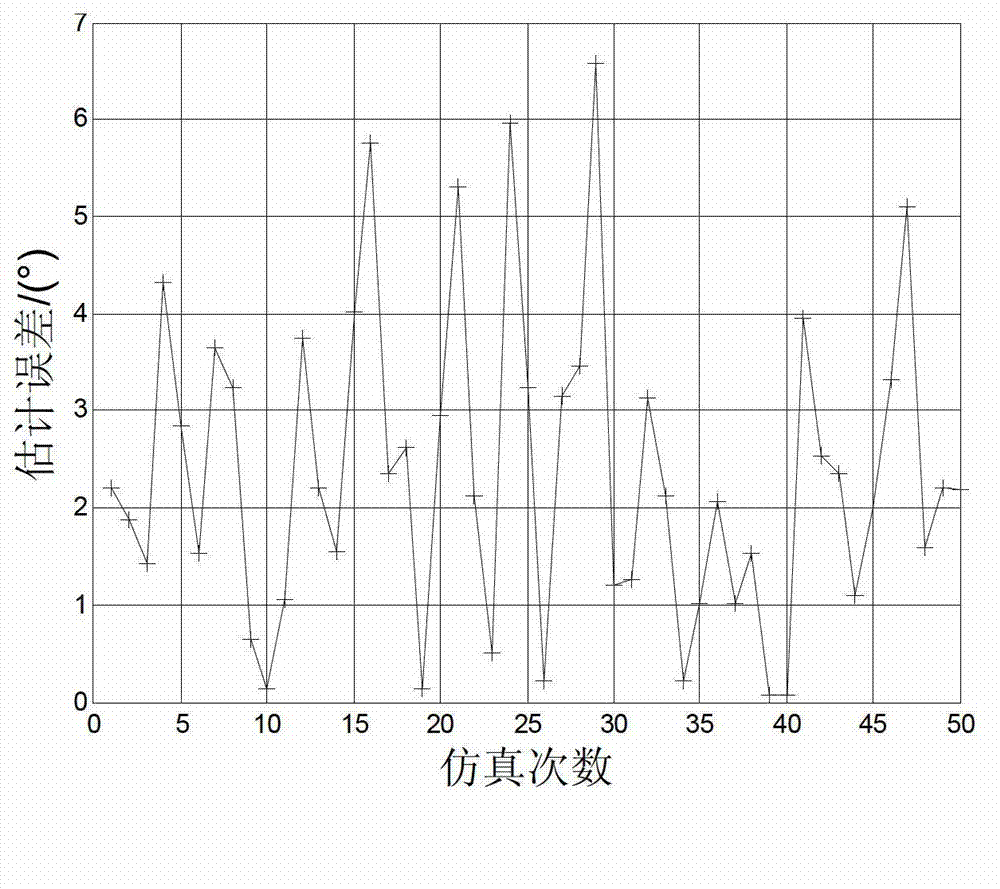Phase difference estimation method of distributed radar based on orthogonal waveforms
A technology of orthogonal waveform and phase difference, which is applied in the field of distributed fully coherent radar, can solve the problems of out-of-synchronization of the phase of the local oscillator system, and achieve the effect of improving the estimation accuracy
- Summary
- Abstract
- Description
- Claims
- Application Information
AI Technical Summary
Problems solved by technology
Method used
Image
Examples
Embodiment
[0093] The distance R between the target and the radar 1 1 =200km, distance R between target and radar 2 2 =200.025km; the phase synchronization error of the two radars Δθ=10°. The center frequency f of the radar transmitted signal 0 =10GHz; radar transmission pulse repetition period PRT=2ms, pulse width τ=0.2ms; optional phase code space M=4 of quadrature polyphase coded signal; sub-pulse number N=200 of quadrature polyphase coded signal; The peak value of the cross-correlation function will seriously affect the measurement accuracy of the phase difference, so the weighting coefficient of the cost function λ=100 is selected; the noise is additive Gaussian white noise, and the signal-to-noise ratio SNR=30dB.
[0094] Therefore, the time delay difference of the two echo signals Δt=ΔR / c=0.1667us; and the quadrature signal sub-pulse width τ sub =τ / N=1us. Therefore, the echo time difference between the two radars does not exceed one sub-pulse. Therefore, the following cost fu...
PUM
 Login to View More
Login to View More Abstract
Description
Claims
Application Information
 Login to View More
Login to View More - R&D
- Intellectual Property
- Life Sciences
- Materials
- Tech Scout
- Unparalleled Data Quality
- Higher Quality Content
- 60% Fewer Hallucinations
Browse by: Latest US Patents, China's latest patents, Technical Efficacy Thesaurus, Application Domain, Technology Topic, Popular Technical Reports.
© 2025 PatSnap. All rights reserved.Legal|Privacy policy|Modern Slavery Act Transparency Statement|Sitemap|About US| Contact US: help@patsnap.com



